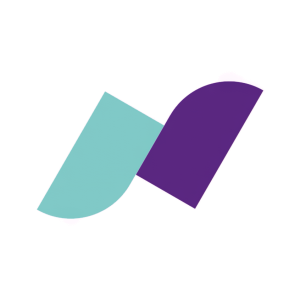NeuroStar® Advanced Therapy Outcomes Registry Clinical Data Published in Brain Stimulation Validates Depression Treatment Protocols
Neuronetics announced the publication of clinical data from the NeuroStar Outcomes Registry in Brain Stimulation, confirming that the Dash protocol (19-minute sessions) is as effective as the standard 38.5-minute TMS protocol for treating depression. Based on data from 5,010 patients, response rates reached 72%, and remission rates were 53%. This shorter treatment may enhance patient access and clinic throughput, facilitating better care for those not responding to medications.
- Efficacy of the Dash protocol is statistically similar to the Standard protocol, indicating no loss in treatment effectiveness.
- Response rates of 72% and remission rates of 53% demonstrate strong clinical outcomes.
- Shorter treatment sessions increase patient access and clinic capacity.
- None.
Insights
Analyzing...
Peer-reviewed article substantiates efficacy of 19-minute Dash protocol
MALVERN, Pa., Feb. 23, 2021 (GLOBE NEWSWIRE) -- Neuronetics, Inc. (NASDAQ: STIM), a commercial stage medical technology company focused on designing, developing and marketing products that improve the quality of life for patients who suffer from psychiatric disorders, announced today that clinical data from NeuroStar Outcomes Registry comparing outcomes with NeuroStar’s Standard TMS protocol and its shorter, Dash protocol has been published in Brain Stimulation and is available online now.
The NeuroStar Outcomes Registry launched in November 2016 for the purpose of collecting and analyzing outcomes data from treatment in real-world clinical settings with Neuronetics’ NeuroStar Advanced Therapy, a non-drug, non-invasive transcranial magnetic stimulation (TMS) option for treating depression. Since its launch, it has grown into the largest registry focused on outcomes for depression treatment. Most recently, researchers contrasted treatment outcomes with NeuroStar’s Standard TMS protocol (38.5 minutes per session) and the Dash protocol, which, at the shortest rest time between pulses (intertrain intervals or ITI) has a session duration of 18.75 minutes.
Based on an analysis of 5,010 NeuroStar Outcomes Registry patients, the study found that efficacy is statistically similar between patients who received the Standard treatment protocol at 38 minutes per session compared to the Dash protocol.
“I know firsthand how important it is to offer the most convenient form of TMS therapy and to be able to give patients solid, evidence-based answers when asked how well a new protocol works,” said Dr. Linda Carpenter, Professor of Psychiatry and Human Behavior at Brown University and lead author of the study. “Shortening the duration of daily sessions without reducing efficacy is a change that not only makes the entire course of treatment more acceptable for patients, but also allows my clinic to accommodate more patients each day. These findings were generated from thousands of NeuroStar patients across a large number of naturalistic practice settings, and the results are compelling and provide me with a high level of confidence in implementing the Dash protocol in my own clinical practice.”
The results showed:
- Strong efficacy obtained with the shorter ITIs allows clinicians to efficiently treat a larger number of patients
- The Standard and Dash protocols did not differ in number of treatment sessions, and both manifested strong antidepressant effects
- Response rates were notably as high as 72 percent among study samples
- Remission rates were notably as high as 53 percent among study samples
“The NeuroStar Outcomes Registry data continues to support the safety and efficacy of our treatment protocols for patients who haven’t had success with antidepressant medications, and we’re excited to have the research published and shared with the broader clinical community,” said Keith J. Sullivan, President and CEO of Neuronetics. “The shortened Dash protocol not only means clinicians are able to treat more patients in need, but also that patients have access to an effective, more convenient treatment option. I’m grateful to the NeuroStar providers who contribute to the Outcomes Registry; it is research like this that informs treatment progress and advancements.”
The research published in Brain Stimulation follows the publication of registry data in the Journal of Affective Disorders in December 2020, which suggested NeuroStar Advanced Therapy be studied and evaluated as a first-line treatment for Major Depressive Disorder.
The NeuroStar Advanced Therapy system can be offered in three treatment variations in order to expand access and availability: Standard, which offers treatments at 38 minutes per session; Dash, which offers treatments as little as 19 minutes per session; and TouchStar theta burst, which offers treatments at three minutes per session. Visit www.neurostar.com for more information.
About Neuronetics
Neuronetics, Inc. is a commercial-stage medical technology company focused on designing, developing, and marketing products that improve the quality of life for patients who suffer from psychiatric disorders. Its commercial product, the NeuroStar® Advanced Therapy System, is a non-invasive and non-systemic office-based treatment that uses transcranial magnetic stimulation, or TMS, to create a pulsed, MRI-strength magnetic field that induces electrical currents designed to stimulate specific areas of the brain associated with mood. The system is cleared by the United States Food and Drug Administration, or FDA, for the treatment of major depressive disorder in adult patients who have failed to achieve satisfactory improvement from prior antidepressant medication in the current episode. Visit NeuroStar.com for safety information and indications for use. NeuroStar is also available in other parts of the world, including Japan, where it is listed under Japan’s national health insurance. Additional information can be found at https://neurostar.com/neuronetics/.
Media Contact:
Chelsey Manko
Vault Communications
610-455-2778
cmanko@vaultcommunications.com







